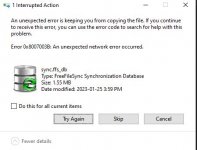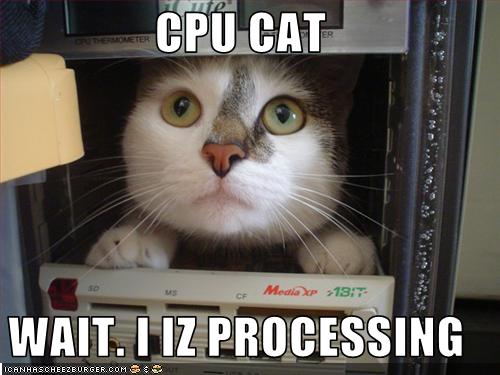Hi my hardware setup as follows
Dell T420 Server
2x E5-2450 v2 (8C 16T 2.5GHz)
192GB DDR3 1600 MHz (12 x 16GB)
Dell PERC H710P (used for VM Storage, truenas OS drive is stored here)
Virtual Disk 1: RAID5 8 x 1TB SATA SSD
Dell 6Gbps SAS HBA (External H200) flashed to IT mode (Passed through PCIE to truenas VM)
Dell MD 3000 15 bay 3.5" SAS enclosure
12 x 8TB Seagate IronWolf drives
OS: ESXi 6.7
Truenas VM Info:
CPU Cores: 8
Memory: 64GB
VHD1: 16GB (for OS, stored on SSD RAID 5)
PCI Passthrough: Dell 6Gbps SAS HBA (External H200) flashed to IT mode
Truenas Core 13 - TrueNAS-13.0-U3.1
Truenas Core comes up after installation and everything seems to work fine, get setup with a static IP, create a pool, all my drives show up, create a dataset and an smb share, after fiddling with permissions a bit go access to the share, and from this point on I have nothing but problems.
I cannot copy data to the NAS properly from my windows 10 system over smb, it hangs for a long time and then says "An unexpected error is keeping you rom copying the file. If you continue to receive this error, you can use the error code to search for help with this problem. Error 0x8007003B: An unexpected network error occured". But then to make it even weirder, if I refresh my truenas share the file I copied is there!
hw.pci.enable_msi/msix tunables but I don't really understand what I am doing with them, what does the number correspond to? is it just boolean off/on 0/1
hw.pci.enable_msi="0"
hw.pci.enable_msix="0"
made it not boot anymore and I had to redo the VM, but still the same behavior.
Any help at all would be greatly appreciated as I am kind of lost with this now.
Dell T420 Server
2x E5-2450 v2 (8C 16T 2.5GHz)
192GB DDR3 1600 MHz (12 x 16GB)
Dell PERC H710P (used for VM Storage, truenas OS drive is stored here)
Virtual Disk 1: RAID5 8 x 1TB SATA SSD
Dell 6Gbps SAS HBA (External H200) flashed to IT mode (Passed through PCIE to truenas VM)
Dell MD 3000 15 bay 3.5" SAS enclosure
12 x 8TB Seagate IronWolf drives
OS: ESXi 6.7
Truenas VM Info:
CPU Cores: 8
Memory: 64GB
VHD1: 16GB (for OS, stored on SSD RAID 5)
PCI Passthrough: Dell 6Gbps SAS HBA (External H200) flashed to IT mode
Truenas Core 13 - TrueNAS-13.0-U3.1
Truenas Core comes up after installation and everything seems to work fine, get setup with a static IP, create a pool, all my drives show up, create a dataset and an smb share, after fiddling with permissions a bit go access to the share, and from this point on I have nothing but problems.
I cannot copy data to the NAS properly from my windows 10 system over smb, it hangs for a long time and then says "An unexpected error is keeping you rom copying the file. If you continue to receive this error, you can use the error code to search for help with this problem. Error 0x8007003B: An unexpected network error occured". But then to make it even weirder, if I refresh my truenas share the file I copied is there!
hw.pci.enable_msi/msix tunables but I don't really understand what I am doing with them, what does the number correspond to? is it just boolean off/on 0/1
hw.pci.enable_msi="0"
hw.pci.enable_msix="0"
made it not boot anymore and I had to redo the VM, but still the same behavior.
Any help at all would be greatly appreciated as I am kind of lost with this now.






